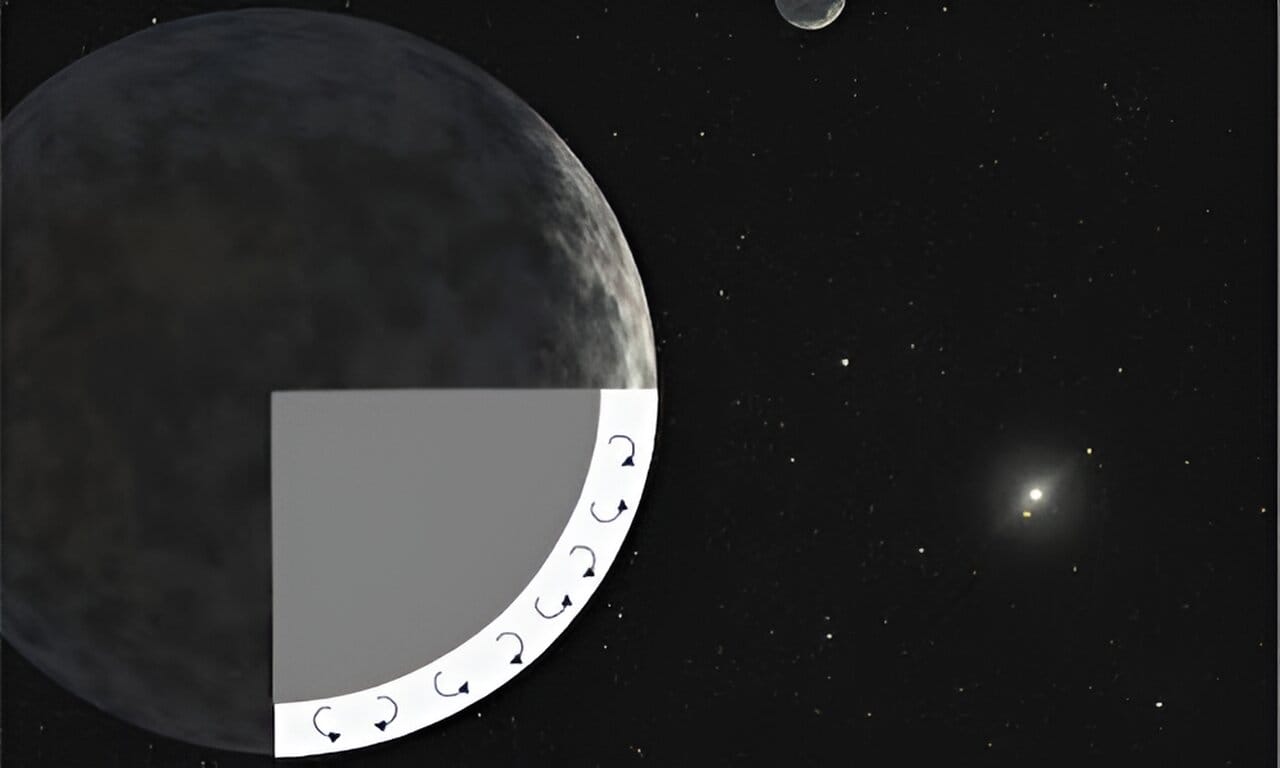
- 🌌 Eris, discovered in 2005, is the second-largest known dwarf planet in the Solar System.
- 🔭 Researchers used data from Eris’ moon Dysnomia to suggest that Eris has a different type of ice shell than Pluto.
- 🤔 Despite similarities in size, Eris and Pluto may have different surface topographies and compositions, highlighting the diversity of Kuiper Belt Objects.
Eris is the most massive and second-largest known dwarf planet in the Solar System. It lies in the Kuiper belt, the circumstellar disc that extends beyond Neptune, at the edge of our Solar System. Researchers believe Eris has a solid rocky core and a layer of hard ice. But the ice may not be that impenetrable after all. Researchers have created a model that suggests Eris’ surface may behave like soft cheese — or like a slushie.
Pluto hates Eris
Astronomers only discovered Eris in 2005, mostly because it lies so far away from the solar system. It’s 50% farther from the Sun than Pluto and 68 times farther than the Earth is from the Sun. It was the discovery of Eris that prompted discussions about dwarf planets; and it was this discussion that ultimately led to Pluto’s “demotion” from planet status.
It was its similarities to Pluto that drew UC Santa Cruz researcher Francis Nimmo to study Eris.
Unlike Pluto, which was recently visited by the New Horizons mission, Eris has not yet been visited by our spacecraft. Everything we know about it comes from remote observations and models. Some six months ago, Nimmo was visiting Michael Brown, one of the researchers who discovered Eris. Upon that visit, he realized that some of Brown’s new, unpublished data could help reveal information about the properties of Eris.

The first clue comes from Eris’ moon, Dysnomia.
Recent observations have shown that Eris is tidally locked to Dysnomia, meaning that the same side of Eris always faces Dysnomia, similar to how our Moon is locked with Earth.
“That happens because the big planet gets spun down by the tides that the little moon raises on it,” explained Nimmo. “The bigger the moon is, the faster the planet spins down.”
This locking indicates that Eris is surprisingly dissipative – it loses energy more efficiently than expected. This dissipation is crucial for understanding Eris’s internal composition.
But there was a piece missing. Researchers were unsure just how big Eris’ moon Dysnomia was. This is where the new data from Brown comes in.
Moons and dwarf planets
The mass ratio between Eris and Dysnomia, as observed using the Atacama Large Millimeter/Submillimeter Array, has been instrumental in determining Eris’s internal structure. Brown’s then-unpublished data showed that Eris’s moon must be below a certain mass. This upper limit on mass enabled the researchers to create a model of the dwarf planet-moon dynamics. This model suggests that Eris has a similar structure to that of Pluto, with a rocky core and an ice shell.
But unlike Pluto, which has a conductive ice shell, Eris’s ice shell appears to be convective. This means that the ice is moving and transferring heat, which is essential for the level of dissipation observed. The convective nature of the ice shell is likely due to Eris’s apparent lack of volatiles compared to Pluto. This difference might be the result of a more energetic impact in Eris’s past, which could have caused a significant loss of volatile materials.
In other words, this means that Eris is squishier than Pluto.
“The rock contains radioactive elements, and those produce heat. And then that heat has to get out somehow,” explained Nimmo. “So as the heat escapes, it drives this slow churning in the ice.”
The researcher adds that Eris behaves less like a rigid object and “more like a soft cheese or something like that.”
Eris and Pluto
A 3D model of Eris. Credits: NASA.
Eris is sometimes considered a “twin” of Pluto, as the two are very similar in terms of size. However, these findings show that the two may not be as similar as previously considered.
Eris’s characteristics also provide insight into the diversity of Kuiper Belt Objects (KBOs). While Eris and Pluto are both differentiated, their distinct ice shells point to different evolutionary paths. Eris’s high density, relative to Pluto, and its lack of volatiles suggest a unique formation and evolutionary history, possibly involving more violent collisions or different initial compositions.
Their surface topography may also be different. Pluto seems to have some pretty impressive topographic features, while Eris may be smooth. However, this can only be resolved by sending missions to Eris and mapping it out in more detail.
“We make the point that Eris should be pretty smooth because if there’s any surface topography, the ice is going to flow and that topography will go away,” said Nimmo. “So it would be nice to get some measurements of what shape Eris is because if it’s very irregular, that would not agree with our model.”
Eris was once just a speck in our telescopes. Now, it seems to emerge as a testament to the complexity and diversity of our solar system. Even in our cosmic neighborhood, there are still plenty of mysteries waiting to be uncovered.
Journal Reference: Francis Nimmo et al, The internal structure of Eris inferred from its spin and orbit evolution, Science Advances (2023). DOI: 10.1126/sciadv.adi9201






